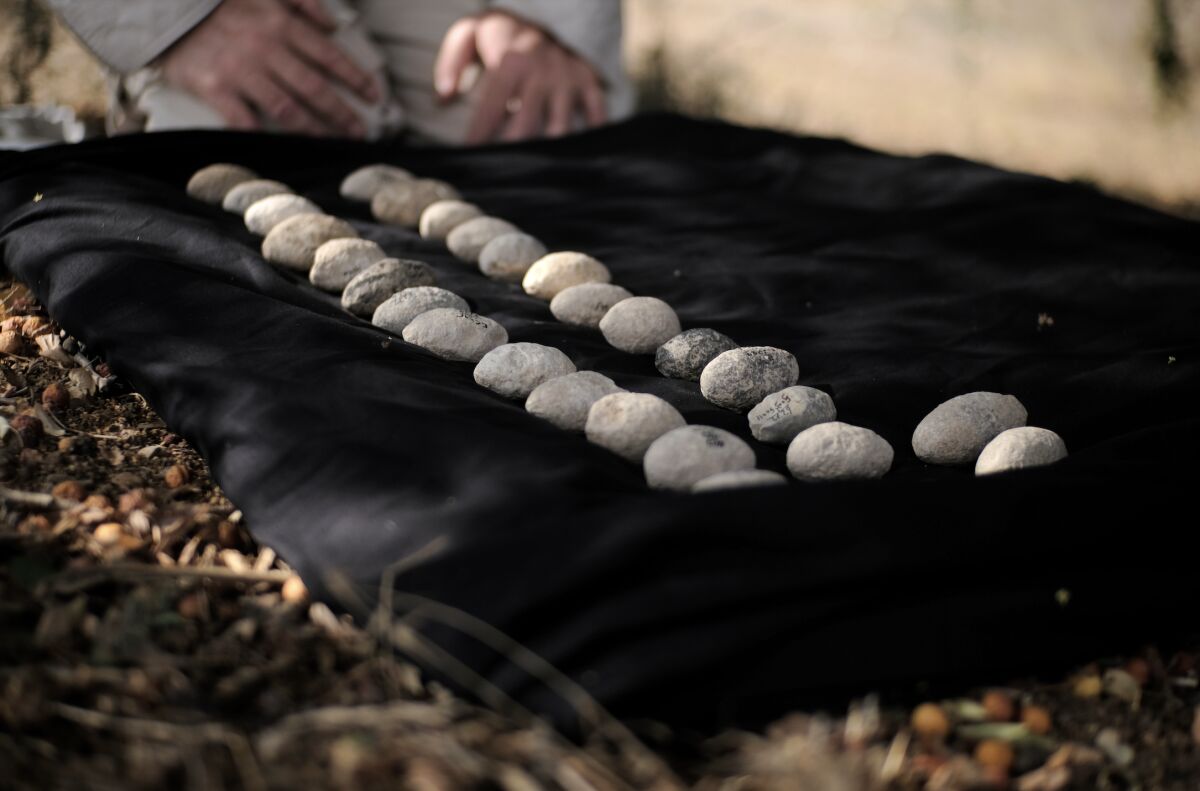“The story of the human race is war,” Sir Winston Churchill once stated. “Except for brief and precarious interludes, there has never been peace in the world; and before history began, murderous strife was universal and unending.”
This week, the Israel Antiquities Authority (iaa) revealed just that: prehistoric evidence of warfare—the earliest thus far discovered in the southern Levant.

In a press release issued Wednesday, the iaa announced the discovery and analysis of two large slingstone ammunition caches, dated to the first part of the Chalcolithic period; they were discovered at the large archaeological sites of ‘En Esur (Israel’s northern Sharon Plain) and ‘En Ẓippori (Lower Galilee). The discovery has been recently published in the iaa’s latest ‘Atiqot journal issue, themed “The Science of Ancient Warfare and Defense.” The article is titled “Up in Arms: Slingstone Assemblages From the Late Prehistoric Sites of ‘En Ẓippori and ‘En Esur,” by Gil Haklay, Hendrik Bron, Dina Shalem, Ianir Milevski and Nimrod Getzov.
The collection of projectiles from both sites totals 424, almost-identical slingstones made of hard limestone/dolomite, uniform in size, weight and shaping—“a specific biconical aerodynamic form, enabling exact and effective projection,” according to the researchers.

According to the press release, “Similar slingstones have been found at other sites in the country, mainly from the Hula Valley and the Galilee in the north to the northern Sharon, but this is the first time that they have been found in excavations in such large concentrations.” They believe that due to the quantity, this constituted some kind of preparation for large-scale warfare. Together with other discoveries, it also points to these sites as important early regional hubs.
The wider Chalcolithic period is generally dated by scientists to around 5000 to 3300 b.c.e. The term “Chalcolithic” means “copper-stone” (thus the period is otherwise known as the “Copper Age”), due to the emergence of copper tools and weaponry at this time. Interestingly, the earliest hint at weapons production in the Bible is in connection with Tubal-cain and the forging of “brass,” or copper (nehosheth)—Genesis 4:22.

Of course, as the biblical account describes, warfare and violence were present virtually from the beginning of man’s history. And despite all the progress of modernity, in the words of our late namesake Herbert W. Armstrong, we remain in a “paradoxical world of awesome accomplishment that is at the same time utterly helpless to solve its problems of mounting and continually escalating evils.” Such “evils,” which have tragically manifested themselves again in recent weeks, cause discoveries such as these to bear greater gravity and sobriety.

Eli Eskosido, director of the iaa, summed up the discovery: “Yet again, archaeology teaches us that history does repeat itself.”

